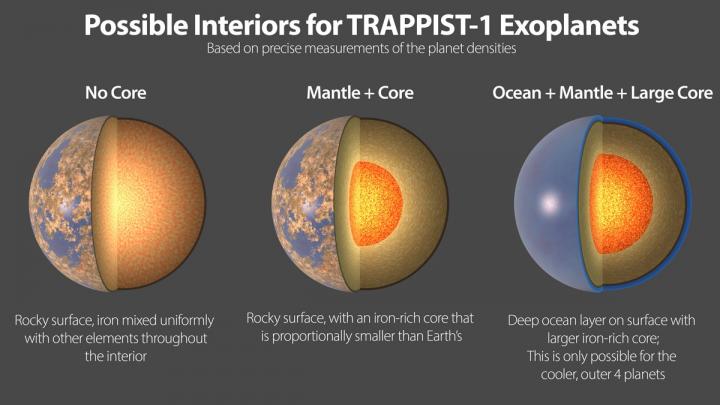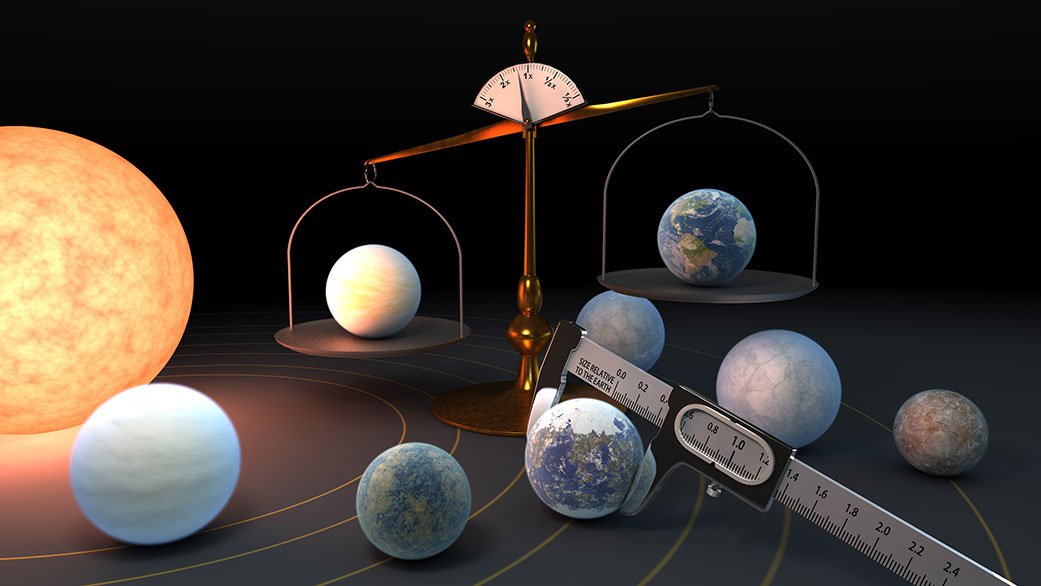The TRAPPIST-1 system has long be studied by exoplanet hunters due to its unique quantity of planets that happen to also be Earth sized. In a recent paper, a team of scientists led by Eric Agol at the University of Washington, dove into more detail on the density of the seven known planets in the system, and, surprisingly, found that they were all very similar.
All seven planets were all found to be around 8% less dense than the Earth. Many planets have been found that were of similar density. But there has never been a system found with the same consistency of density of the TRAPPIST-1 system. The paper’s authors offer up three different explanations for why this might be the case.
First, there could be slightly less iron in them compared to the Earth. Since most of the Earth’s iron is found in its core, this would imply that the core of these TRAPPIST worlds would have a smaller core than that of Earth.
Second, the planets could be completely covered in rust (iron-oxide), much as Mars is. Unlike on Mars, this rust could go all the way to its core, meaning that the iron inside the core of the seven planets could actually be completely made out of rust – a bit of a strange thought.
Credit: PBS Spacetime
But even more intriguing than the idea of a planet with a rusty core is the basis of the third hypothesis – a large percentage of the mass of the planets could be accounted for by water. The three inner planets in the system are too close to the star at the system’s heart to hold on to any liquid water. However, much like Venus, if the planets had a heavy atmosphere it is possible they could maintain water-heavy clouds.

Credit: NASA / JPL-Caltech
Three of the four outer planets in the system live in the “Goldilocks Zone” where liquid water could exist on their surface (the fourth being too far out for that to be the case). And there is some theory to back up the idea of these planets having more water than might otherwise be expected. However, Dr. Agol points out that the likelihood that all seven planets would have the exact right amount of water to appear to have the same densities would be a huge coincidence. So while we can’t currently disprove this theory, the probability of the TRAPPIST worlds being covered in oceans doesn’t improve from this particular study.

Credit: NASA / JPL – Caltech
Assuredly, there will be many more studies to come. As one of the systems with a preponderance of Earth-sized planets, TRAPPIST-1 will continue to draw observational time and attention from many in the astronomical community, no matter what its planets are made out of.
Learn More:
University of Liege: The seven rocky planets of TRAPPIST-1 seem to have very similar compositions
NASA / JPL: The 7 Rocky Trappist Planets May Be Made of Similar Stuff
University of Washington: The 7 rocky planets orbiting TRAPPIST-1 may be made of similar stuff.
Lead Image: Artist depiction of the seven worlds of the TRAPPIST-1 System
Credit: NASA / JPL-Caltech

